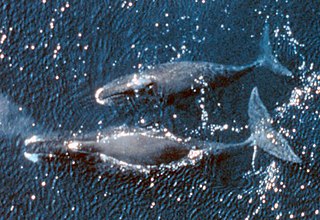 W
WAlaska Native cultures are rich and diverse, and their art forms are representations of their history, skills, tradition, adaptation, and nearly twenty thousand years of continuous life in some of the most remote places on earth. These art forms are largely unseen and unknown outside the state of Alaska, due to distance from the art markets of the world.
 W
WAlaska Native storytelling has been passed down through generations by means of oral presentation. The stories tell life lessons or serve as lessons in heritage. Many different aspects of Arctic life are incorporated into each story, mainly the various animals found in Alaska. Due to the decline in the number of speakers of native languages in Alaska and a change in lifestyle amongst many of the native peoples, oral storytelling has become less common. In recent years many of these stories have been written down, though many people argue that the telling of the story is just as important as the words within.
 W
WBaleen basketry is a particular type of basketry, an Alaska Native art made from whale baleen developed in Barrow, Point Hope, and Wainwright, Alaska by North Alaskan Iñupiaq people. Created at the dawn of the 20th century, the baskets made with baleen were based on willow-root prototypes. Thin strips of baleen are cut and attached to ivory disks at the start. A coiling method is used to sew baleen bands together, ending with a carved ivory knob on the handle. Most baleen baskets are made by men for sale to tourists, but over time distinctive styles have developed, and since the 1970s more women have become involved in what was originally a predominantly male occupation. Expertly carved finials made by the Siberian Yupik of the St. Lawrence Island and Iñupiaq of the King Island are often used as the handles.
 W
WThe bowhead whale is a species of baleen whale belonging to the family Balaenidae and the only living representative of the genus Balaena. It is the only baleen whale endemic to the Arctic and subarctic waters, and is named after its characteristic massive triangular skull, which it uses to break through Arctic ice. Other common names of the species are the Greenland right whale or Arctic whale. American whalemen called them the steeple-top, polar whale, or Russia or Russian whale.
 W
WA button blanket is wool blanket embellished with mother-of-pearl buttons, created by Northwest Coastal tribes, that is worn for ceremonial purposes.
 W
WThe Deer Rock, also called Peace Rock, is located on the right bank of the Chilkoot River in Southeast Alaska in the Haines Borough, Alaska of USA. In the language of the Raven Clan and Eagle Clan of the Tlingit Alaskan Indian tribes also known as the Chilkhat (Kukhwan) and the Chilkoot (Haines), the rock is called as the Gowakaan Teiyee, and is of great significance to them as they held negotiations on this rock to arrive at a peaceful settlement of the tragic conflicts of the past. TlukwAxadi clan named the “rock” with the prefix “Deer”, as they believed that the Deer represented peace for now and always. A clan member who was chosen to mediate a settlement to end the conflict sat over this rock after truce in the battle between the clans, to think peacefully and to arrive at the most acceptable terms of settlement. Thereafter, with diplomatic finesse, in the presence of the Deer Rock, the warring clans settled their differences and since then no further conflicts have occurred between them. This Deer Rock was thus witness to peaceful settlement that saved countless members of the Raven and Eagle clans of the Tlingit tribe who would have otherwise died if the war had continued. Since then the Deer Rock has become a heritage monument of the Tlingit people.
 W
WA kuspuk is a hooded overshirt with a large front pocket commonly worn among Alaska Natives. Kuspuks are tunic-length, falling anywhere from below the hips to below the knees. The bottom portion of kuspuks worn by women may be gathered and akin to a skirt. Kuspuks tend to be pullover garments, though some have zippers.
 W
WShamanism among Alaska Natives was particularly important as it served to construct their special connection to their land, and a kinship with the animals with whom they share that land. Before the introduction of western culture and the religions that are now practiced in Alaska, there was a common spiritual connection made with the people to the land they occupied. The most common name for this connection is shamanism. Shamanism differs in every culture where it is practiced, in Alaska it is centered in the animals that are common in the area. Through the use of many myths, stories, and ceremonies these animals are personified and their spirits made tangible and in turn are deeply woven within the Native Alaska people today. It was through the shaman that the spirit world was connected to the natural world. A shaman in Alaska Native culture was a mediator, healer and the spirit worlds’ mouthpiece. Although shamanism is no longer popularly practiced, it was and continues, to be the heart of the Native Alaskan people.
 W
WTraditional Alaskan Native religion involves mediation between people and spirits, souls, and other immortal beings. Such beliefs and practices were once widespread among Inuit, Yupik, Aleut, and Northwest Coastal Indian cultures, but today are less common. They were already in decline among many groups when the first major ethnological research was done. For example, at the end of the 19th century, Sagdloq, the last medicine man among what were then called in English, "Polar Eskimos", died; he was believed to be able to travel to the sky and under the sea, and was also known for using ventriloquism and sleight-of-hand.